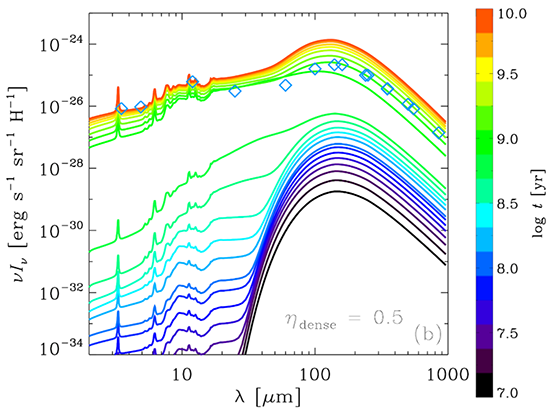Evolution of grain size distribution in the interstellar medium

Based on a one-zone evolution model of grain size distribution in a galaxy, we (Hirashita et al. 2020) calculated the evolution of infrared spectral energy distribution (SED), considering silicate, carbonaceous dust, and polycyclic aromatic hydrocarbons (PAHs).
Dust evolution in the interstellar medium (ISM) is important because dust governs the interstellar radiation field through absorption and scattering of stellar light and re-emission in the far infrared. Based on a one-zone evolution model of grain size distribution in a galaxy, we (Hirashita et al. 2020) calculated the evolution of infrared spectral energy distribution (SED), considering silicate, carbonaceous dust, and polycyclic aromatic hydrocarbons (PAHs). We found that the SED shape generally has weak mid-infrared (MIR) emission in the early phase of galaxy evolution because the dust abundance is dominated by large grains. At an intermediate stage (t ∼ 1 Gyr), the MIR emission grows rapidly because the abundance of small grains increases drastically by the accretion of gas-phase metals. The broad match between the theoretical calculations and the observations supports our understanding of the grain size distribution.